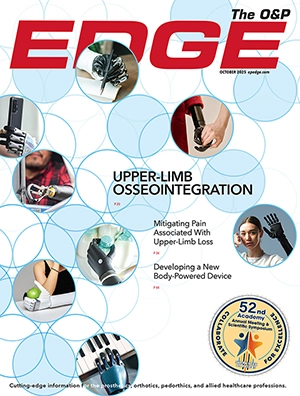For people prone to falling, such as those with lower-limb amputations, automatically detecting falls with mobile phones appears to provide an opportunity for rapid response to injuries and better knowledge of what caused the fall and its consequences.
According to a study published online in the October edition of JMIR Publications, the goal was to develop a method to use data from individuals without amputations to detect falls in those with a lower-limb amputation while they carried a mobile phone during their everyday activities. Prior studies have focused on fall detection in individuals without amputations using data from a laboratory setting, which may provide a limited ability to detect falls in real-world scenarios.
For this study, researchers obtained 861 simulated indoor and outdoor falls from ten individuals without amputations (mean age 24.2 years) and six persons who had a lower-limb amputation (mean age 47.4 years). In addition, researchers recorded a broad database of activities of daily living, including data from three participants’ routines. Sensor readings (accelerometer and gyroscope) from a mobile phone were recorded as participants carried a cell phone in three common locations—on the waist, in a pocket, and in the hand. A set of 40 features were computed from the sensors data and four classifiers were trained and combined through stacking to detect falls.
All participants performed four types of simulated falls: forward (trip), backward (slip), left, and right. Non-amputee participants performed indoor and outdoor falls; those with an amputation only fell indoors. During all simulated falls, participants fell onto a padded mat (indoor) or grass (outdoor). Each wore several layers of padding and guards over the wrists, elbows, knees, and shins to prevent injury. During simulated trips, participants were asked to walk toward the mat and then stumble on the edge as if tripping, then fall forward onto the mat. For slips, participants were instructed to slide one foot out from under them as if slipping and fall backward onto the mat.
For the model trained on control individuals, the accuracy of fall detection in those with amputations was not statistically different from that of a model trained on the group with an amputation. Detection of falls in control individuals yielded similar results. A mean of 2.2 false alarms per day were found when participants carried the phone during their daily routine for two or more days. Machine-learning classifiers outperformed the threshold-based one.
Study results showed that a mobile phone-based fall detection model can use data from individuals without an amputation to detect falls in individuals walking with a prosthesis. According to the study, falls were successfully detected when the mobile phone was carried in any location and without a predetermined orientation. The number of false alarms also yielded by the model over a longer period of time was also reasonably low. This moves the application of mobile phone-based fall detection systems closer to a real-world use case scenario, according to the authors.




